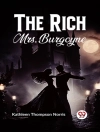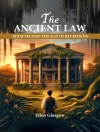In The Road to Guilford Courthouse, one of the most acclaimed military histories of the Revolutionary War ever written, John Buchanan explored the first half of the critical Southern Campaign and introduced readers to its brilliant architect, Major General Nathanael Greene. In this long-awaited sequel, Buchanan brings this story to its dramatic conclusion.
Greene’s Southern Campaign was the most difficult of the war. With a supply line stretching hundreds of miles northward, it revealed much about the crucial military art of provision and transport. Insufficient manpower a constant problem, Greene attempted to incorporate black regiments into his army, a plan angrily rejected by the South Carolina legislature. A bloody civil war between Rebels and Tories was wreaking havoc on the South at the time, forcing Greene to address vigilante terror and restore civilian government. As his correspondence with Thomas Jefferson during the campaign shows, Greene was also bedeviled by the conflict between war and the rights of the people, and the question of how to set constraints under which a free society wages war.
Joining Greene is an unforgettable cast of characters—men of strong and, at times, antagonistic personalities—all of whom are vividly portrayed. We also follow the fate of Greene’s tenacious foe, Lieutenant Colonel Francis, Lord Rawdon. By the time the British evacuate Charleston—and Greene and his ragged, malaria-stricken, faithful Continental Army enter the city in triumph—the reader has witnessed in telling detail one of the most punishing campaigns of the Revolution, culminating in one of its greatest victories.
A propos de l’auteur
John Buchanan, former chief registrar of the Metropolitan Museum of Art, is the author of The Road to Valley Forge: How Washington Built the Army that Won the Revolution and The Road to Guilford Courthouse: The American Revolution in the Carolinas.












